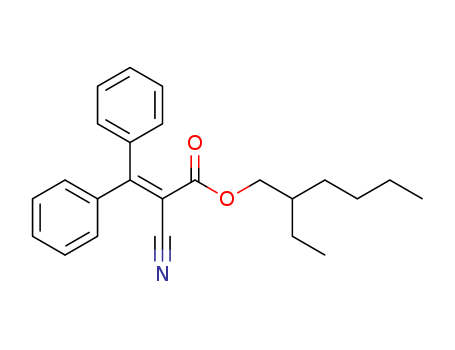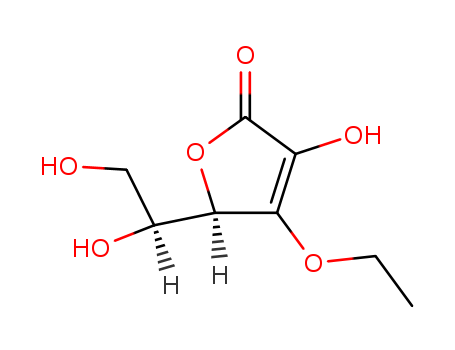
81-13-0
- Product Name:D-Panthenol
- Molecular Formula:C9H19NO4
- Purity:99%
- Molecular Weight:205.254
Product Details
pd_meltingpoint:64~69℃
Appearance:clear colorless to slightly yellow viscous liquid
Quality Factory Hot Selling D-Panthenol 81-13-0 with Fast Shipping
- Molecular Formula:C9H19NO4
- Molecular Weight:205.254
- Appearance/Colour:clear colorless to slightly yellow viscous liquid
- Vapor Pressure:2.21E-11mmHg at 25°C
- Melting Point:64~69℃
- Refractive Index:1.495 - 1.502
- Boiling Point:483.6 °C at 760 mmHg
- PKA:13.03±0.20(Predicted)
- Flash Point:246.3 °C
- PSA:89.79000
- Density:1.166 g/cm3
- LogP:-0.74470
Dexpanthenol(Cas 81-13-0) Usage
|
Manufacturing Process |
130 parts by weight of d(-)-α-hydroxy-β,β-dimethyl-gamma-butyric acid lactone are dissolved in 150 parts by volume of methyl alcohol. 75 parts by weight of 3-hydroxypropylamine are added, in one portion, to the solution and the mixture is well stirred. While the reaction sets in, the temperature of the mixture gradually rises by itself to about 50°C and then drops again after about two hours. To cause completion of the reaction, the mixture is allowed to stand at room temperature for 24 hours. The so obtained (d+)-α,γdihydroxy-β,β-dimethyl-butyric-acid-(3'-hydroxypropyl)-amide is freed from methyl alcohol in vacuo. It is a colorless, viscous oil, easily soluble in water. It boils under a pressure of 0.02 mm between 118° and 120°C. |
|
Therapeutic Function |
Gastrointestinal drug |
|
Flammability and Explosibility |
Nonflammable |
|
Biochem/physiol Actions |
D-Panthenol is the alcohol analogue and biological precursor of D-pantothenic acid. These analogues are precursors in the biosynthesis of coenzyme A. D-Panthenol and D-Pantothenic acid are used in a variety of skin protection products. D-pantothenic acid may have a role in controlling keratinocyte proliferation and differentiation. D-Panthenol may be used for studies of skin protection emulsions from UV irradiation and as a humectant. |
|
Contact allergens |
Pan(to)thenol is the alcohol corresponding to pantothenic acid, of the vitamin B5 group. It is used as a food additive, and in skin and hair products as a conditioning agent. Contact dermatitis and urticaria have been reported. |
|
Safety Profile |
Moderately toxic by intravenous route. A skin and eye irritant. When heated to decomposition it emits toxic fumes of NOx. See also AMIDES. |
|
Veterinary Drugs and Treatments |
Dexpanthenol has been suggested for use in intestinal atony or distension, postoperative retention of flatus and feces, prophylaxis and treatment of paralytic ileus after abdominal surgery or traumatic injuries, equine colic (not due to mechanical obstruction) and any other condition when there is an impairment of smooth muscle function. Controlled studies are lacking with regard to proving the efficacy of the drug for any of these indications. |
|
Purification Methods |
Purify D-panthenol by distillation in vacuo. It is a slightly hygroscopic viscous oil and is soluble in H2O and organic solvents. It is hydrolysed by alkali and strong acid. [Rabin J Am Pharm Assoc (Sci Ed) 37 502 1948, Bonati & Pitré Farmaco Ed Scient 14 43 1959, Beilstein 4 IV 1652.] |
|
Brand name |
D-Panthenol 50 (BASF); Ilopan (Savage); Motilyn (Abbott). |
|
General Description |
Dexpanthenol is an alcohol analog of pantothenic acid and an important component of parenterals, local cosmetic preparations and multi-vitamins. It has as much biological activity as pantothenic acid and is found to be stable in aqueous solution.Pharmaceutical secondary standards for application in quality control, provide pharma laboratories and manufacturers with a convenient and cost-effective alternative to the preparation of in-house working standards. |
InChI:InChI=1/C9H19NO4/c1-9(2,6-12)7(13)8(14)10-4-3-5-11/h7,11-13H,3-6H2,1-2H3,(H,10,14)/t7-/m1/s1
81-13-0 Relevant articles
Determination of panthenol enantiomers in cosmetic preparations using an achiral-chiral–coupled column HPLC system
Hroboňová, Katarína,Lomenova, Anna
, p. 191 - 199 (2019/12/15)
A new high-performance liquid chromatogr...
ALPHA HYDROXY AMIDES
-
Page/Page column 39, (2014/04/17)
The present invention relates to alpha h...
PROCESS FOR PREPARING AND PURIFYING 3-AMINOPROPANOL
-
Page/Page column 10, (2012/06/18)
The present invention relates to a proce...
81-13-0 Process route
-
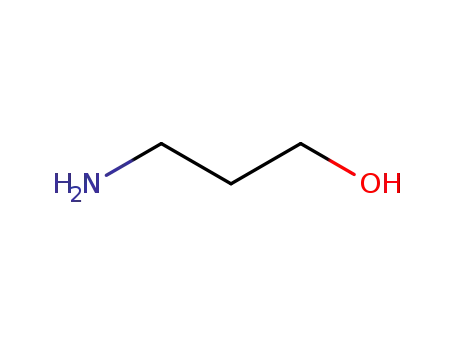
- 156-87-6
propan-1-ol-3-amine

-
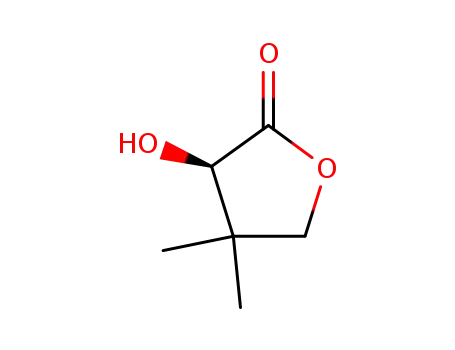
- 599-04-2
(R)-Pantolacton

-
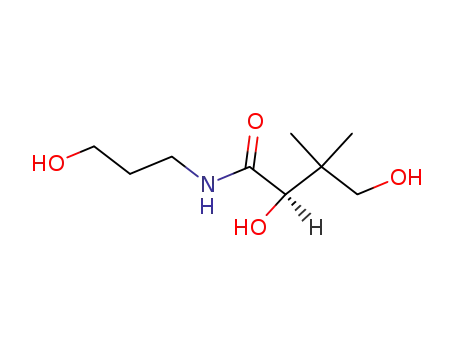
- 81-13-0,1113-70-8
pantothenol
| Conditions | Yield |
|---|---|
|
With triethylamine; In ethanol; at 160 ℃; for 3h; Microwave irradiation;
|
95% |
|
With methanol;
|
|
|
at 60 ℃; for 5h;
|
-
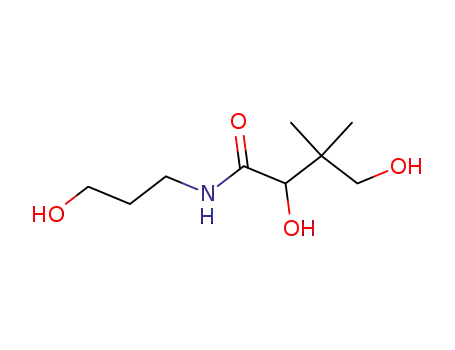
- 50584-68-4,16485-10-2,1113-70-8
panthenol

-
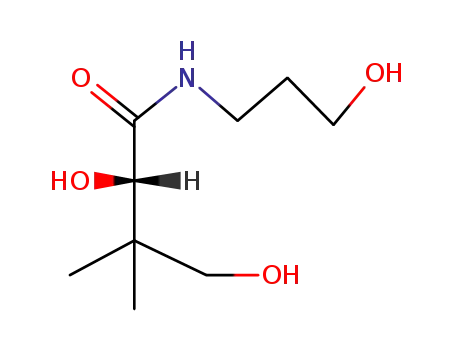
- 74561-18-5,1113-70-8
dexpanthenol

-

- 81-13-0,1113-70-8
pantothenol
| Conditions | Yield |
|---|---|
|
With LUX i-Amylose-1; In ethanol; hexane; at 25 ℃; Temperature; Resolution of racemate;
|
81-13-0 Upstream products
-
156-87-6

propan-1-ol-3-amine
-
599-04-2

(R)-Pantolacton
-
50584-68-4

panthenol
81-13-0 Downstream products
-
79-83-4
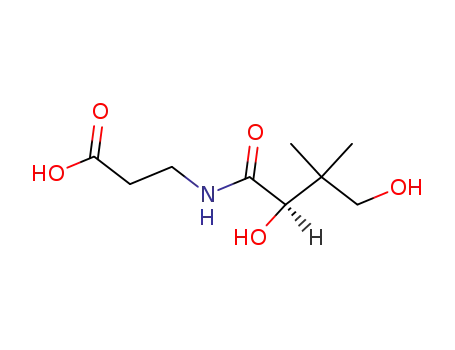
pantothenic acid
-
558-43-0
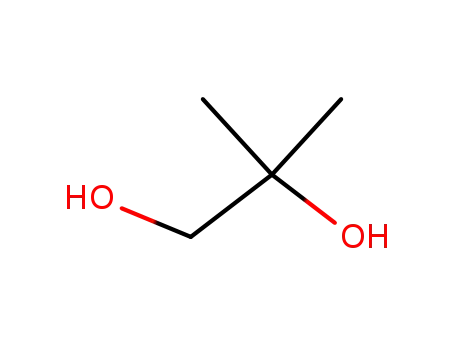
2-Methyl-1,2-propanediol
-
1211493-82-1

[3-hydroxypropylamino]oxoacetic acid
-
94089-18-6
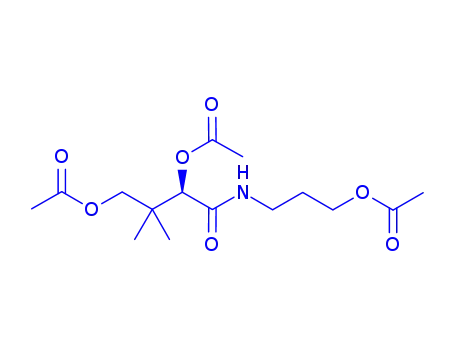
D-panthenol triacetate
Relevant Products
-
0ctocrylene
CAS:6197-30-4
-
Ethyl Ascorbic Acid
CAS:86404-04-8
-
Ascorbyl Glucoside
CAS:129499-78-1

